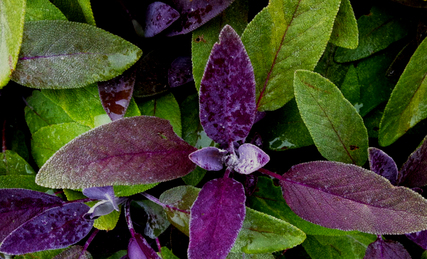
tel: 512 280-1192 Friday, Nov 22, 2013
Nursery notes: Happy Thanksgiving to all our gardening friends
and families who have supported us over the years. We wouldn't be
here without you, and we are deeply grateful to all of you for choos-
ing our nursery for your herbs, trees, veggies and flowers.
______________________________________________________
On sale this week: 50% off antique roses. Sale price $10, reg. $20.
50% off common garden sage: 4.5" pots - $1.80. reg price $3.69.
50% off all metal art. $1 off all bagged mulches, Currently well-
stocked with onion sets: 1015, white Bermuda, red onions, and yellow
granex $4 each. Living Christmas trees in stock: $24.99 - $120 -
Leyland cypress, stone pine, and Aleppo pine. Seasonal rosemary
trees - $14.99 - $54. Current opening hours: 9 a.m. - 5:30 p.m.
(We are closed on Thanksgiving Day)
____________________________________________________
A big thank you to Walter Stewart for his lecture last Sunday. If
you have any further questions, you can reach Walter at this email
address: walterstewart35@gmail.com
____________________________________________________
Special fall colors this year: Think of fall’s turning leaves, and
Texas may not be the first state to come to mind, writes Matthew
Alvarez (KUT). But Austinites have seen their fair share of autumnal
red and gold this year because of the recent rains. beautiful fall
____________________________________________________
Central Texas Gardener KLRU TV. Enter a miniature world of
fairy gardens and terrariums with Sandra Killough from Bonnie’s
Greenhouse. On tour, Lana and Bob Beyer turned their drought-
fried grass into perennial wildlife fun.Sat. noon, 4 p.m. or Sun.,
9 a.m. www.klru

Purple Leaf Sage:a drought tolerant and deer resistant perennial beauty!
Sage: the herb of Thanksgiving
by Chris Winslow
Although during Thanksgiving the spotlight tends always to be on
the cooks in the house, it should also be a time for gardeners to
receive some acclaim.
So, gardeners of south Austin, Buda and Kyle, if you grew any of
the vegetables that are going to be part of next week's Thanksgiving
feast, then speak up at the dinner table, and be sure to take a bow
along with the cook.
No culinary herb comes to mind more than garden sage for its contri-
bution to our enjoyment of the Thanksgiving dinner. Known in the
botanical world as Salvia officinalis, this amazing herb originated in
the Mediterranean basin and has a long history of culinary and medic-
inal uses in Europe and China.
Its genus name is salvia, which is derived from the Latin word salvere,
meaning to be saved. On the medical front it has been used as a stimu-
lant and a tonic. One of its most valued uses is as a mouthwash, to help
heal sores in the mouth and as a gargle for sore throats.
Garden sage is easy to grow and stays evergreen throughout the winter
months. It likes good drainage and a sunny location for at least the
first half of the day.
Although it’s a perennial, it only lasts for two to three years and needs
to be replaced as the old plants begin to get woody and deteriorate.
Sage flowers are blue to purple and bees love them. Pure sage honey
is said to be some of the most valuable in the world.
And not only does sage have a role in the kitchen and the medicine
cabinet… but it looks beautiful in the garden as well. There are about
a half a dozen forms of sage that can be planted. All have the same
culinary and medicinal uses. Here are a few to look for:
Common Garden sage will have the characteristic gray leaves with
the purple-blue flowers. (on sale: see above for details)
Purple garden sage has a purple-ish cast to the new growth. The
leaves then turn gray with age.
Tricolor sage is a variegated cultivar, which has green, cream, and
pink colors in the leaves. This variety will loose its pink color if
planted in too much shade.
Biergarden sage is a gray leaf cultivar that has broad leaves and stays
slightly shorter than its common cousin.
All of these cultivars are readily available and add great color to the
garden. A tip for using fresh garden sage leaves in a cornbread-
dressing recipe: use 6 fresh leaves for each dried sage teaspoon.
Happy Thanksgiving everyone!
 Visit the website: www.itsaboutthyme.com
Visit the website: www.itsaboutthyme.com Visit the nursery:11726 Manchaca Road, Austin, 78748 Like us
on facebook